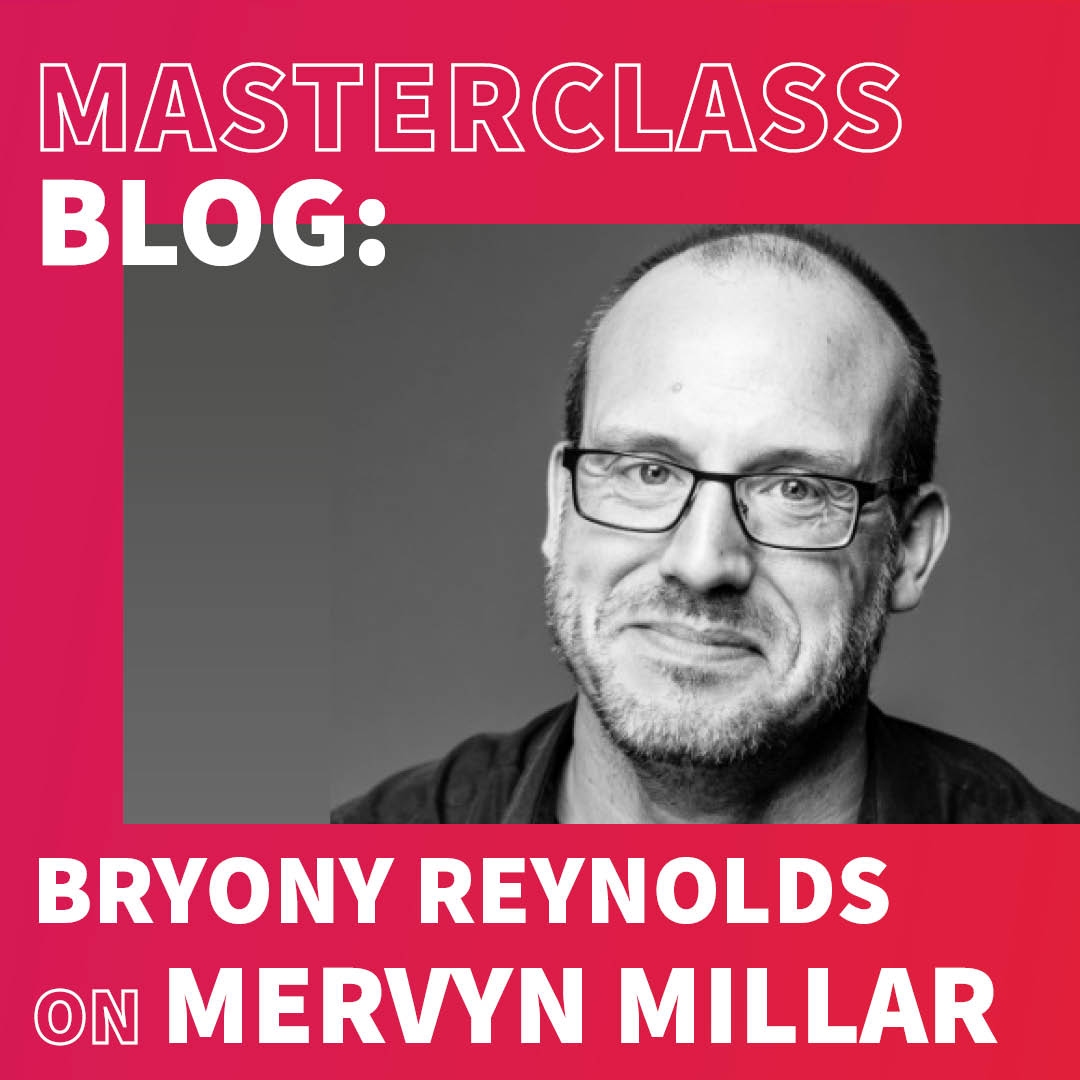Mervyn Millar Masterclass

To see original post click here
Missed our Puppetry Masterclass recently? Bryony has you covered…
Ever wondered what happened behind the scenes to create War Horse? Or why puppetry is so often used in our industry? Here’s a sneak peak of what we learnt in the latest Masterclass, with puppeteer and director Mervyn Millar.
In Millar’s words “the audience watches puppets differently to actors. They pay attention differently. They sit differently”. I personally can attest to this, that there is something about puppets that captures the heartstrings of audiences. They lean forward and pay attention more, because there is an interesting shift; a dynamic that allows audiences to project their own imaginations onto these inanimate objects to bring them to life and empathise with them in a way that is much harder to do with purely an actor on stage.
We were privileged to see this for ourselves in this workshop, as it turned into a practical session with three volunteers coming on stage to make an amazing simple puppet and begin to animate it. To make the puppet:
- Take one long sheet and one shorter sheet of brown paper and scrunch them each into a sausage (without twisting the paper!).
- Fold the larger one in half. Just under where it folds and use some sellotape to make the neck
- Further down from the neck (leaving enough room for a torso) use sellotape to wrap the two halves together to make the hips.
- Add the shorter paper sausage horizontally just under the neck part to make the shoulders and arms.
- Bend the paper a few times at the elbow joints, knee joints and ankle joints to create knees, elbows and feet
A key tip here: don’t over complicate it, it’s as simple as that! Let the imagination do the rest of the work (I know us creatives/actors like to analyse and perfect things, but the simpler this puppet us, the more you’ll be able to do with it!)
More details of this process can be found in Millar’s book Puppetry: How To Do It (in the chapters on Brown Paper puppets), which I would highly recommend reading, as it explains all of this and what follows so brilliantly and is well worth the read.
The three volunteers then took their positions: one person holding the feet to ground the puppet, one holding the hips and one arm, and one holding the neck (controlling the head) and other arm. The most important starting points for animating this puppet was to hold tension throughout it’s body ground it and to then get it to breathe. Just like those ensemble games at drama school/theatre rehearsals, where the whole company try to breathe at the same time, walk at the same pace and stop all at once without someone leading, so it was with this. Trying to work as a team to get the puppet breathing, keeping it small, and breathing together. It is this breathing that entices the audience, sets the tone of the play, and gets the audience to really focus in on the subtle movements of the puppet.
Moving on from breathing, the volunteers then took turns in getting the puppet to look, move, jump, react, cough, and even speak. Remembering to keep it simple and specific, staying in the moment, and working as a unit to achieve this. A great note for this was to only play one thought at a time: the puppet sees something, then reacts, then has a physical change in the body, and only then does it have a desire for impulse/movement.
The most fascinating thing I learnt:
The biggest challenge for Millar in War Horse was how to keep the actors/puppeteers interested, invested and lively when performing night after night for a year or more. The solution….improvise! Yep, that’s right, the movement of the puppets you see in War Horse is not a choreographed set piece, it’s improvisation!!! (Hats off to the cast and crew of War Horse for this!). This means that though they will have specific places they need to get the puppet to at certain times, the movement between those times relies on all teams working together, listening with their whole bodies, being present in the moment, and being willing to go with the ideas and movements of their team to see where it takes them. “If an animal isn’t spontaneous, its not real or believable”, so what better way to keep spontaneity very real than by improvising each night!
Secret note to actors wanting to join the cast of War Horse:
The main thing they are looking for in casting is…personalities! In particular, those who work well together in a unified team, as this is crucial for operating the puppets. They’ll be looking for more meticulous and technically minded people for the legs, calm people for the head (to go with the flow, as the head isn’t necessarily in charge of the horse) and people with good hearts to carry emotion.
Millar’s quote for the day:
“Puppetry is acting, but better”. By this he means that with puppetry, EVERYTHING that the puppet does is character. It’s very clear, specific, and even subtle, with no room for laziness or not being in the moment. It’s the best challenge to keep you present and on your toes, acting ALL the time, even/especially when you’re not in the limelight.
Having worked with puppets a few times myself, I absolutely love it and would highly recommend any performer/theatre-maker to give it a go. If you’re stuck for how to do puppetry, thankfully Millar wrote his book for just that reason (as there’s very few puppetry books out there), so have a read, get inspired, and bring on the puppets!